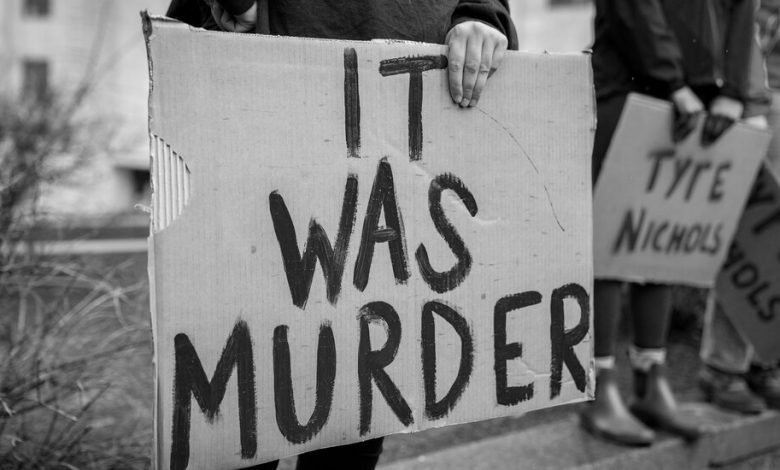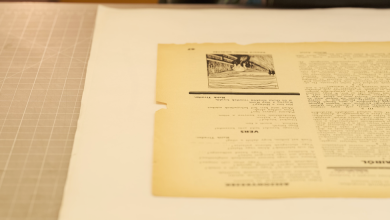Dead Men at the State of the Union

There were dead men at the State of the Union.
No, I’m not talking about George Santos, who I don’t think is long for the House of Representatives because his multitude of lies threatens to end him.
I’m not talking about Kevin McCarthy, who slipped a noose around his own neck in his craven quest to become speaker.
And I’m not talking about President Biden, who still struggles in the polls because the precise reason that he was elected — he was a calm, thoughtful antidote to the endless madness of Donald Trump — has now become his greatest obstacle as a public addicted to flash and theater draws back from his deliberativeness.
I’m talking about two Black men, both killed by the police, one a few years after the Civil War ended and the other last month.
On March 31, 1870, at about 9:30 on a Thursday evening, a Philadelphia policeman shot an unarmed Black man, Henry Truman, in an alley in the city’s Society Hill neighborhood. The shot entered his abdomen and took his life.
The next day, The Philadelphia Inquirer reported what it called the “melancholy” “facts of the case”: how the officer was “attacked” by a “gang” of Black men accused of shoplifting from a local grocery store and, forced to defend himself, “drew his revolver” and fired, wounding Truman.
But that’s not what witnesses saw.
That next day, The Inquirer published their testimony. “I am 19 years of age and reside with a Black woman,” Jennie H. Gardner told investigators; her testimony was the longest and most detailed printed that day.
She described how the officer grabbed one suspect, who got away and “disappeared in a small alley.” The officer gave chase and encountered Truman, who asked what the matter was. Then, Gardner said, the officer “replied, ‘I will show you what’s the matter,’ and crossed the street; he then drew his revolver and deliberately fired at him. I was standing by Mr. Truman at the time.”
The officer was arrested, and his bail was denied. At his trial, the officer echoed the initial story that had been given to The Inquirer. He argued that he feared for his life and fired in self-defense (sound familiar?) after a crowd followed him, cornered him and “began to throw stones at him and cry out, ‘Kill the white —,’ and use other such threatening expressions,” The Inquirer reported.
The jury didn’t buy it. He was convicted of manslaughter.
It was in recognition of this episode, an early case in America of a police officer killing a free unarmed Black man, that members of the Congressional Black Caucus wore “1870” pins to Tuesday night’s State of the Union. The gesture was designed to highlight the long and seemingly interminable history of this form of violence and the desperate need for police reform.
As Representative Bonnie Watson Coleman said on “The Dean Obeidallah Show” about the police killings of Black people: “We’ve not gotten better. We’re getting worse at this.”
In fact, 2022 had the most police killings on record, with Black people disproportionately more likely to be killed by police than white people.
In some ways, the way we process these cases has become more convoluted, not less. In 1870 the officer was arrested immediately and convicted in less than two months. Now the courts and state legislatures have so shielded officers from liability that arrests and convictions are rare.
Also at the State of the Union on Tuesday night were the mother and stepfather of another Black man who met the same fate as Truman, 153 years later: Tyre Nichols, who died last month after a savage beating at the hands of Memphis police officers, one of whom, in a big-game-kill act of perversity, took a picture of Nichols’s bloody body after the beating and texted it to others.
In an annual governmental rite that Republican stunt junkies have plunged into a “Jerry Springer”-like heckle-and-jeer circus, one of the moments of consensus and solemnity was the recognition of Nichols’s parents.
Biden empathized with their grief, talked about the particular fear that Black people and Black families face, touted his executive order “for all federal officers banning chokeholds, restricting no-knock warrants and other key elements of the George Floyd Act” and called on Congress to “come together and finish the job on police reform.”
This was a snap back to the 2021 Biden who, in his speech before a joint session of Congress, said: “We have to come together to rebuild trust between law enforcement and the people they serve, to root out systemic racism in our criminal justice system and to enact police reform in George Floyd’s name that passed the House already.”
Last year, in the run-up to midterm elections in which Republicans were playing on fears about crime, Biden included no references to racism or to reform in his State of the Union but emphatically said: “We should all agree the answer is not to defund the police. It’s to fund the police. Fund them. Fund them.”
Meaningful police reform is even less likely to make it through this Congress than the last one. Tim Scott, the lead Republican negotiator for police reform in the Senate has already tweeted, “Resurrecting the House progressives’ police reform bill is a nonstarter.”
What people are aiming for now are lesser measures on issues like funding and training.
But, make no mistake, these would be tinkerings, if they could pass at all. All the while, Black bodies, from Henry Truman’s to Tyre Nichols’s, continue to pile up, and America becomes resigned to lip service at best and silence at worst.
The Times is committed to publishing a diversity of letters to the editor. We’d like to hear what you think about this or any of our articles. Here are some tips. And here’s our email: [email protected].
Follow The New York Times Opinion section on Facebook and Twitter (@NYTopinion), and Instagram.




